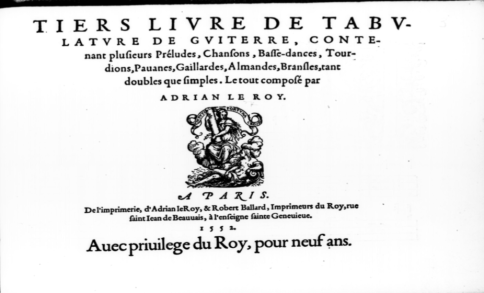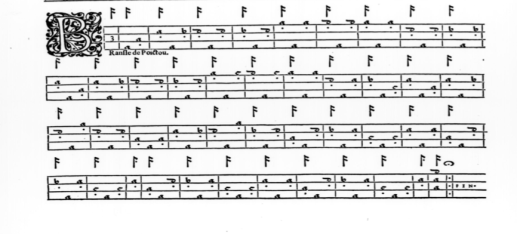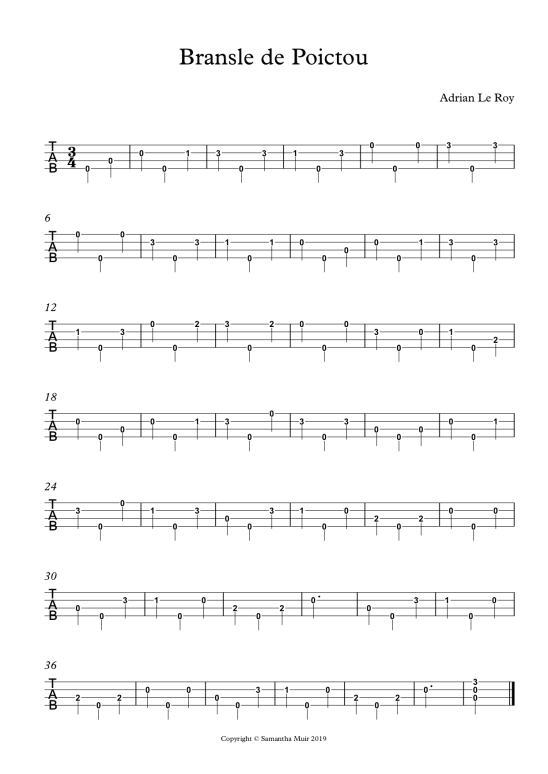
copyright © Josie Elias 2019
People often ask: what is classical ukulele?
To be honest I’ve been a bit wary about defining classical ukulele in case it creates a box for myself, or for others. Labels can be restrictive and I see classical ukulele as opening doors rather than closing them. Moreover, as the ukulele only existed after 1879, and consequently has no history within the oeuvre of classical western music, the term classical ukulele is something of a contradiction.
Before going any further we should define classical music. According to Wikipedia :
“Classical music is art music produced or rooted in the traditions of Western culture, including both liturgical (religious) and secular music. While a more precise term is also used to refer to the period from 1750 to 1820 (the Classical period)…”
If we accept the ukulele’s birthdate as c.1879 – the year the first men to make ukuleles arrived in Hawaii from Madeira – then the ukulele was born 59 years too late to be considered precisely classical! This view, however, is limited. Many arrangers, including John King, Rob MacKillop and Tony Mizen, have proved the ukulele is perfectly capable of playing ‘music produced or rooted in the tradition of Western culture.’
The Renaissance Guitar
The use of small four string, or four course, guitars stretches back to the Renaissance. Christopher Page in The Guitar in Tudor England: A Social and Musical History makes a pertinent observation on the guitar shown in the marquetry on the Eglantine Table (1567) now housed at Hardwick Hall in Derbyshire:
“If the Hardwick Hall guitar is shown to actual size, it is indeed a small instrument: a double-course* Tudor ukulele.” (p.23)
*Double course meaning each string is doubled like on a 12 string guitar.
Here’s Christopher Page playing a renaissance guitar:
The music written for the renaissance guitar can be played on a ukulele using the original tablature. Here’s an example from Adrian Le Roy’s Third Book of Tablature for the Guitar:

Title page of Adrian Le Roy’s Third Book of Guitar Tablature, 1552

Facsimile of the original manuscript
This is how the same piece looks in modern notation. Note now the modern version uses numbers rather than letters to indicate the frets.

The above piece played on a five string tenor ukulele – it starts at around 1.12′
The Madeira Connection
Another historical connection can be made between the ukulele and the chordophones of Madeira – specifically the machete and the rajão. These instruments are widely regarded as the parents of the ukulele. During the 19th century the machete was used as a classical instrument in Madeira. For example the collection of pieces for machete and guitar by Candido Drumond contains 46 pieces in the form of polkas, marches, waltzes, quadrilles, bolleras, and themes and variations.
Classical Ukulele Today
The term classical ukulele is cropping up more and more in ukulele circles – both online and at festivals. There are more players, more books and more arrangements. I’ve been teaching, arranging, composing and performing as a classical ukulele player since 2012. In this blog I’d like to share some thoughts and ideas about the repertoire, the technique and the instruments. As this genre is still relatively new and developing I’m interested to know your thoughts. If there’s anything you’d like to add or reflect on please do so in the comments section below or message me using the contact form.
The Fun & Funny Ukulele
Ukulele players like to present themselves as musical anarchists. The more outrageous their lyrics, costumes, hats and band names the more kudos. Ukulele festivals in the UK have a carnival feeling. The much loved Ukulele Orchestra of Great Britain have taken the opposite approach by packaging their unique combination of humour, virtuosity and vitality in formal evening attire. The formality of their dress and the use of the word orchestra are both an acknowledgement, and tongue-in-cheek mockery, of the musical establishment. Reinventing everything from Tchaikovsky to Nirvana on what they call the “bonsai guitar” the Ukes unashamedly market their approach as “depraved musicology.” More cult than culture it’s this kind of zany rebelliousness that infuses and enthuses the ukulele scene. Both online and at festivals the ukulele projects a wacky combination of fun, fantasy and outlandishness.
Anarchy amongst the Anarchists
Putting the word classical in front of ukulele is quite a conversation stopper. The formality and seriousness associated with classical music contrasts sharply with the idea of the fun and funny ukulele. Telling people I specialise in classical ukulele triggers a variety of responses ranging from derision and denial to surprise and genuine interest. Some people double up with laughter. Others want to know more. Nihilists see no point. Seasoned strummers can become suspicious and sideways looking, like it’s a disease. Classical ukers, of course, think it’s the best thing since sliced bread (unless they’re gluten free and then it’s sliced carrots). One thing’s for sure: classical ukulele challenges the idea that the ukulele is just a comedy prop or 3 chord strum-box.
Repertoire
Mozart and Haydn, the most classical of composers, didn’t write for the ukulele. Neither did classical guitar composers such as Carulli, Sor or Carcassi. If you look at the general repertoire of the ukulele from a historical perspective you’ll find a lot of music by George Formby, Roy Smeck and a host of Tin Pan alley composers from the early twentieth century. Nothing classical about them. Anything classical is, therefore, an arrangement.
Technique
The majority of ukulele groups and players use the ukulele to accompany their singing with strummed chords. Some use felt picks and some play the triple stroke. Strumming patterns can be extremely complicated and virtuosic. Check out Roy Smeck, George Formby, Andy Eastwood and Jake Shimabukuro.
Actually strumming been around for hundreds of years. Have a look at Taro Takeuchi playing a baroque guitar. Keep watching until 1.50’!
Wonderful!
As interest in classical ukulele is growing so is the need to develop right hand fingerpicking techniques. It’s technically demanding to combine melody and harmony and players are constantly looking for ways to enhance their finger-style playing. This is why classical guitarists and lutenists, who have spent years honing their skills with scales, arpeggios and studies, can easily adapt to playing classical ukulele. There’s already a solid technical pedagogy in place for the classical guitar. Not so (yet) for classical ukulele.
Instrument
Sizes range from nano, sopranino, soprano, concert, tenor, baritone and bass ukuleles. Popular woods are mahogany and koa but makers also use a range of tone woods including cedar, spruce, walnut, sapele and rosewood. Ukuleles are usually strung with nylon or fluorocarbon strings and the standard tuning is re-entrant (gCEA). Low G is becoming more popular. Baritone ukuleles are normally tuned DGBE but some people are using GCEA tuning. Some ukuleles have pick-ups and plug in to amplifiers, some are acoustic. There are resonator ukes (the ones that look like new age cheese graters) and electric ukes (some of which look like mini Fender Strats). But no one goes into their local music shop and asks to look at the classical ukulele section in the same way they might ask to look at the classical guitar section. Ukuleles are categorised according size. A few innovative makers are, however, creating ukuleles more suitable for playing finger style or classical. The qualities which define ‘classical ukuleles’ are their sustain and resonance. We’ll look at one maker in more detail in my next blog.
John King, Flea Market Music and Creating a Repertoire
The current wave of classical ukulele players owe much to John King (1953-2009). In 2004 Flea Market Music published King’s groundbreaking book The Classical Ukulele. The book, which comes with a CD of all the pieces, is an eclectic mix of works by Bach, Mozart, Chopin and Beethoven; a few traditional tunes such Danny Boy and Shells of Ewa and Scott Joplin’s ragtime classic, The Entertainer. King was really pushing the boundaries of what the ukulele could do. He was an innovator and a door opener.
In an interview, Jim Beloff, the owner of Flea Market Music, told me: “We’re very proud of the fact that The Classical Ukulele arranged by John King was the first of its kind.” Flea Market Music, which specialises in ukulele books, had previously focused on publishing song books. When I asked Jim Beloff about the risk of publishing a book of classical ukulele arrangements he was quick to brush aside any doubts, “In 2004, it was an easy decision to publish it knowing that John was unquestionably the world’s finest performer of this kind of repertoire and a passionate advocate for the unique campanella style of playing and arranging. The fact that he was also the leading authority on the history of the ukulele and a wonderful human being as well, were icing on the cake.”
John King first encountered the ukulele when he was 6 years old and living in Hawaii. Writing on his Nalu Music website blog King said that since he showed no talent for the uke he decided to study classical guitar instead. He was a student of Pepe Romero and went on to become a classical guitar teacher at college level. One day King picked up his old ukulele and decided to try something. During his classical guitar studies he’d learnt about the baroque guitar and how composers such as Gaspar Sanz had developed a technique called campanella where the melodic notes are placed across the strings to create an over-ringing effect reminiscent of little bells. Like the baroque guitar the ukulele uses re-entrant tuning so King decided to try campanella on the ukulele:
He said, “It was a revelation. The instrument had a voice and when I played, it sang to me.”
King went on to arrange and record a full CD of pieces by Bach.
King also arranged fiddle tunes such as Larry O’Gaff and Swallowtail and numerous Hawaiian songs including Aloha Oe and Ka Ipo Lei Mano. While these pieces are not classical, King’s precise technique and clean style of playing were decidedly classical. King was flexible in his choice of repertoire but, as the video below demonstrates, he was uncompromising in his high standard of performance. In 2008 the Journal of the Society for American Music said John King was, “perhaps the world’s only true classical ukulele virtuoso.” The ukulele world was shocked and saddened by the sudden death of John King in 2009.
Flea Market Music’s philosophy to extend the boundaries of the ukulele lead to the publication of three further classical ukulele books. In 2011 Flea Market took a risk and published little known ukulele player Tony Mizen’s collection of renaissance arrangements in From Lute to Uke. While Beloff and his wife initially wondered about the wisdom of publishing a collection of lute music from the 1500’s for the ukulele Beloff said, “Tony’s recordings were so delightful that we couldn’t say no.” Mizen and Flea Market teamed up again in 2012 to produce The Baroque Ukulele and in 2015 for the The Romantic Ukulele. When asked about the success of the classical books in relation to other ukulele books Beloff responded,
“I’m happy to report that all three of the Tony Mizen books (From Lute To Uke; The Baroque Ukulele; The Romantic Ukulele) and the John King book have been steady sellers, outperforming many of our other genre songbooks. I believe they are as timeless as any book of musical arrangements and hope they’ll remain in print for a long time.”
Rob MacKillop & Mel Bay
In 2011 Mel Bay added to the classical ukulele repertoire by publishing Rob MacKillop’s 20 Spanish Baroque Pieces by Gaspar Sanz arranged for ukulele. MacKillop, who is also an accomplished baroque guitarist, considers the music of Sanz very well suited to the ukulele. The use of campanellas and strumming passages are idiomatic to the ukulele. In MacKillop’s words, ‘the little instrument can bring a freshness to these old but lively pieces.’ In all MacKillop has produced nine ukulele books for Mel Bay including The Bach Uke Book, 20 Easy Classical Pieces for Kids, 20 Easy Fingerstyle Studies for Uke and 20 Progressive Fingerstyle Studies for Uke.
Performance
One of the great things about ukulele festivals is that they embrace all musical genres. Main stage acts vary from jazz to blues to punk to classical. I’ve enjoyed playing in some of the top UK festivals. But playing classical ukulele can be challenging in such an environment as the emphasis is often on entertainment rather than intimacy. A big stage cluttered with amplifiers and mics creates a barrier between the player and the audience. The need to use mics can result in a loss of sound quality. Louder is not necessarily better. A classical performance can be profound for its intimacy and the player’s ability to draw the audience into the music. Even a large audience can be spellbound by a subtle pianissimo. But at ukulele festivals there’s a tendency for audience members to be moving around and talking during the performance.This adds to the distraction and noise level and can destroy the atmosphere. It can also be extremely irritating to other audience members who want to listen. Recently I’ve taken to playing in small, village churches where there is no need for mics or even a stage. The acoustics and the atmosphere are ideal. Playing to 40 people can be more rewarding than playing to 400! If you are looking to perform as a classical ukulele player then I recommend trying small venues with a good acoustic.
My Journey
When I first started playing the ukulele I made a lot of arrangements by composers including Tarrega, Sor, Carcassi, Carulli and Giuliani. After a while I started to consider what I was trying to do. There were 2 questions I asked myself:
1. Was I trying to create (perhaps it would be more accurate to say steal!) a historical repertoire in order to justify the term classical ukulele?
2. What is the point of recycling classical guitar repertoire for the ukulele?
Arrangements of works by masters such as Bach, Sor and Tarrega can be adapted to play on the ukulele. They are fun to play and can really surprise an audience. But I was beginning to worry that classical ukulele was becoming a sideshow to the classical guitar.
Arranging pieces by Sor, Carulli, Carcassi, Giuliani and Tarrega made me think about the workings of the ukulele and about the compositional process. Reducing music from a 6 string instrument to a 4 string instrument posed many questions. What do I leave out? How do I compensate for the lack of bass? Am I altering the voice leading and harmonic structure of the piece? Would Sor really hate what I was doing to his music?!?
A side effect of arranging was that I started to think about how I would compose for the ukulele and how I could create works that are idiomatic to the instrument. How would I cope with the lack of bass and the limited range. Seeking solutions to these issues I turned to poetic forms for inspiration. A sonnet is just 14 lines but some of the most profound and beautiful poetry is in sonnet form. And what about Japanese haiku with just 3 lines and 17 syllables. These micro poems can be thought provoking and moving. Sometimes less really is more. The greatest challenge, however, is convincing non-ukulele composers that the ukulele is worth writing for as both a solo and ensemble instrument. Things are progressing but there is still a long way to go to.
Conclusion
I see the term classical ukulele as organic, daring and forward moving. Classical ukulele is both an acknowledgement to the pioneering work of John King and a way of distinguishing the repertoire and style of playing from ukulele norms. Arrangements can be as diverse as songs by the Beatles and Preludes by Bach.
Here is a new work composed for me by Dimitri van Halderan.
Thanks for this post. I prefer “classical” uke….however I think it’s more of a fingerpicking style….for instance “classical beatles” music, To me it means having all the melody written out for you. My fav book is the Lute to Uke book, I am obsessed with medieval renaisance lute music. You talk of going from 6to 4strings, what about the lute 20 to for strings? I’m currently exploring a Dowland song, for classical guitar, uke, and low g uke. I come from a classical guitar background and find that I can get what I want in theukes smaller package. Could you creat your blog with a larger font? I had to enlarge it for my old eyes! Love your blog.
LikeLiked by 1 person
The guitar was once considered “ a side show” and earned its place with amazing performers such as Andres Segovia. It continues to earn its respect with performers such as Sharon Isbin and so many more. John King was an amazing inspiration to me when he upped the anti if you will and opened peoples eyes to what can be done with the little ukulele. What an amazing thing to re-invent old works into new arrangements. I think you should continue your work with confidence. We have so forgo tten about the second classical ukulele player at that time , John Kavanagh who recorded two Cd’s “Parlour Music” and “Small Rooms”. With the untimely death of John King, John Kavanagh was asked to fill in at one of the few ukulele festivals at that time. Your analogy of getting lost on the big stage is dead on. We need intimate places. Funny how the titles of John Kavanagh’s Cd’s reflected that. It was a statement done on purpose. I was to accompany John Kavanagh to the festival but sadly John Kavanagh past away in a drowning accident just after John King. A huge blow to the ukulele community and to the classical ukulele playing style. I would love to pass on to you some time, John Kavanagh’s rare CD’s. With their inspiration so began my my Luthier career. I studied classical guitar building under Master Luthier’s such as Robbie O’Brien and Sergei de Jonge with the intent to build ukuleles in the classical sense and have been doing so for 15 years now. My building style is specific to the fingerpicking and campanella spirit. I am proud of being around when the third ukulele craze began and honored to know those that are upping the respect for this instrument. One day the ukulele will have its place and the “side show” name will be long forgotten. So continue your work, and I will continue my work. Together and along with the others that you mentioned in your article we will get there. Until then I will be turning out high end concert quality classical ukulele instruments and you will be arranging the classical music to play on them. Let’s not worry what others think but instead just let them listen to the beautiful music we will make. One day our paths will cross but until then keep up the good work.
LikeLiked by 1 person
Dear Heidi, thank for your thoughts and especially for introducing me to John Kavanagh. I would love to hear his CDs and I do hope our paths will cross one day. Meanwhile, I would like to include a page on you on this site. I wonder if you would like to write something about about why your instruments are specific to fingerpicking and campanella style playing. I have only commissioned ukuleles from UK builders as importing instruments from other countries is quite tricky with the paper work and extra costs (tax, import duties, handling fees) so it would be great to promote a luthier in Canada. One day I would love to try one of your ukuleles!
LikeLike
I am an amateur musician who started with the guitar and I am exploring the world of ‘ukulele now. I am so thrilled to discover a resource like this among the endless sea of beginner ‘uke lessons etc.
Thanks very much for your efforts.
LikeLiked by 1 person
An excellent synopsis of the current situation! As you indicate, the future lies in a subtle interplay between instruments, arrangers and composers; once they’re in place, players and audiences will quickly follow. I hope UK players and composers consider their roots: not just the solo lute but lute with (bass) viol – an alternative to u-bass, especially useful in intimate acoustic settings? – if not viol consort; now THAT would be disruptive in the Early Music world!, but also the cittern/pandora/bandura repertoire and its context of mixed ensembles music (Thom Morley). Is the repertoire of baryton repertoire of Haydn et al not also open to us? In parallel, I hope ukeists and composers explore post-Arvo Part minimalism (or even the slightly more lyrical work of Mompou), just as the world of the contemporary piano is being disrupted by Arnalds, Richter and others. Good times ahead!
LikeLiked by 1 person
I really like what you do, how you do what you do, your scholarly web post, and how you think. I will try to play some of your arrangements interspersed with ‘Ain’t She Sweet’ and Shanty In Old Shanty Town’ I particularly like ‘The Rakes of Mallow’ which I have committed to memory and include in my repertoire. I also thank you for setting up many of your arrangements so they can easily be played by two or three. My performing partner died about a year ago. I wish we could have gotten to play some of your pieces together before he died. We were too focused on playing some other stuff.
When I found your arrangement of ‘Yellow Bird’ (from Choucoune – 1883). I had to smile since I think of it as more calypso or Caribbean style than classical. What you did is fun. “Ukulele Mike” Lynch did a chord melody arrangement that I am comparing with yours. I would like to send that music to you but don’t know how to attach it in this format. I will try to send it some other way or you could send me your email address. I’ll be very careful with it and not let anyone else have it.
Since I play with a low G I have to make a note to use the G on the second string rather than my fourth string. Sometimes I get tripped up with this.
Maybe one day I can get to your part of the world. I would certainly like to meet you and hear you perform. Thanks again for what you are doing. Please keep it up – it’s inspirational.
Don David
Destin, Florida USA
LikeLiked by 1 person
Thanks Don! You can contact me through the contact page on this site.
LikeLike